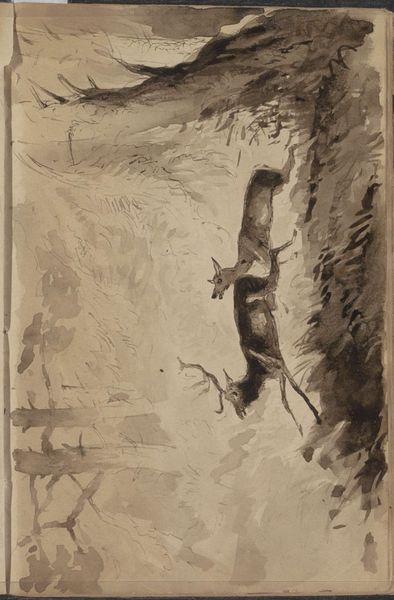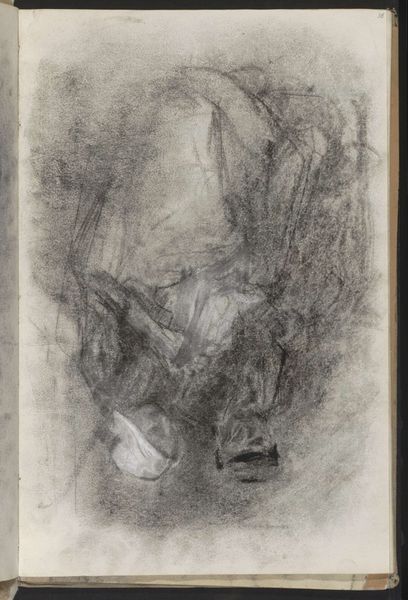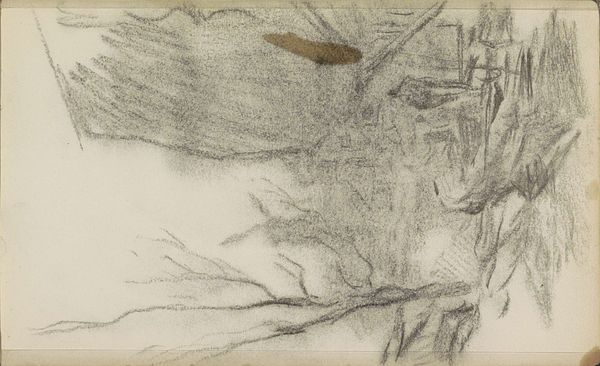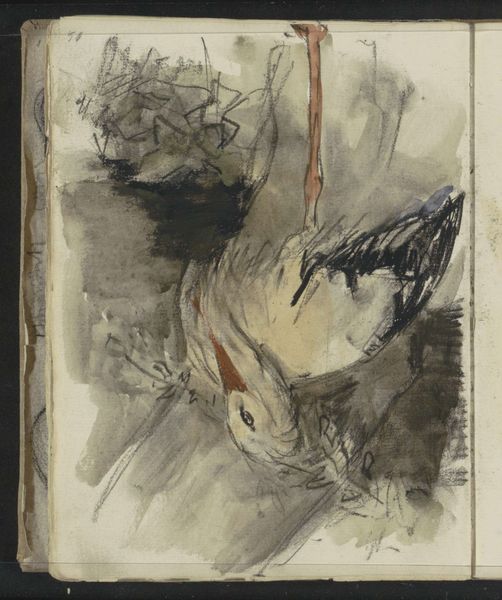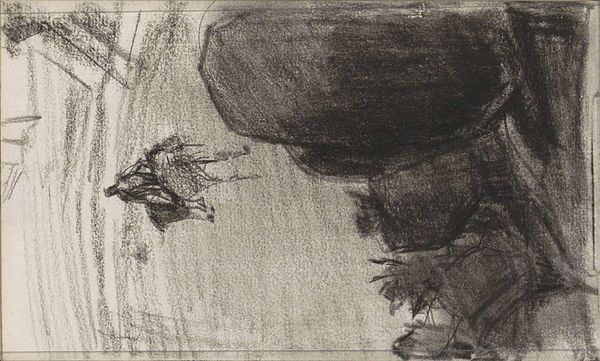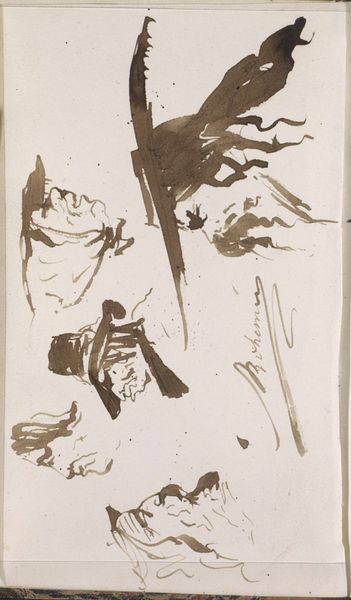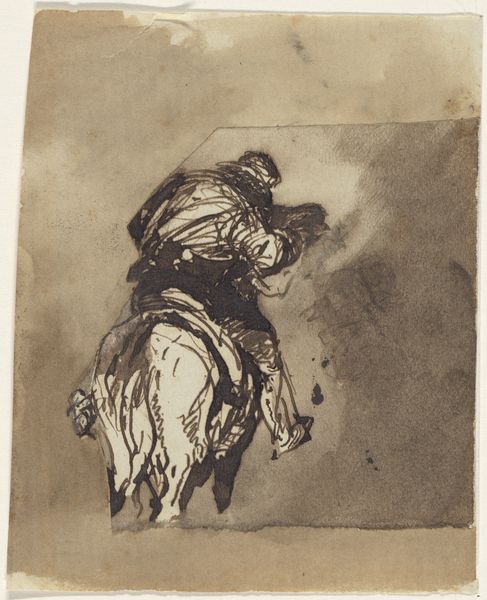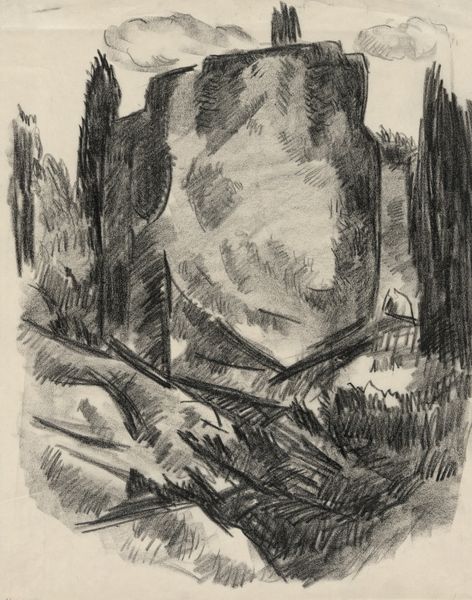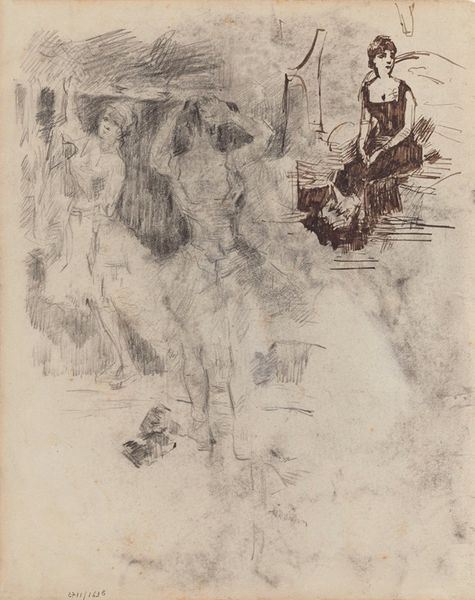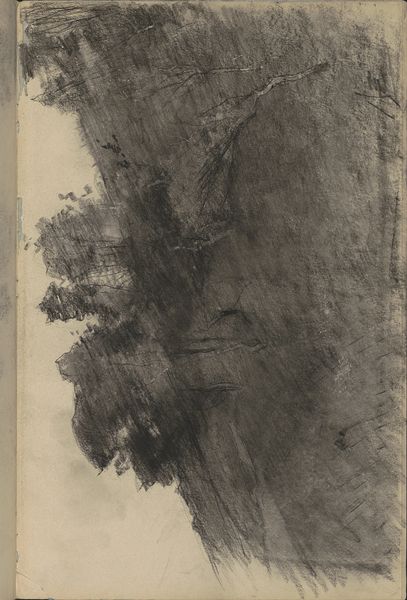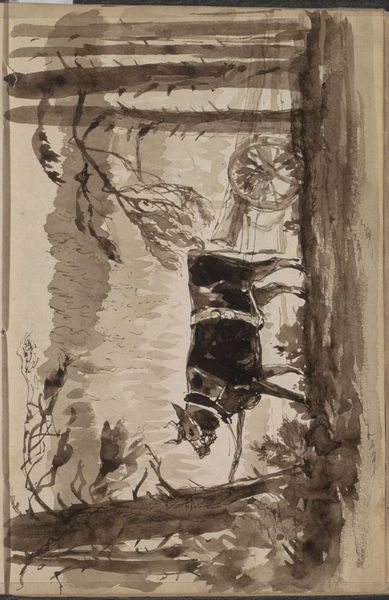
watercolor
#
landscape
#
charcoal drawing
#
watercolor
#
genre-painting
#
watercolor
Copyright: Rijks Museum: Open Domain
Curator: Welcome to the Rijksmuseum. We are standing before Johannes Tavenraat's "Landscape with Figures by a Mill," believed to have been created sometime between 1841 and 1853. It's executed in watercolor and charcoal drawing. Editor: My initial reaction is of melancholy. The monochromatic palette and somewhat obscured figures evoke a sense of quiet contemplation, perhaps tinged with isolation. Curator: It’s interesting that you say that. Landscape painting during that period served a variety of functions, not just aesthetic. It could evoke national identity and moral virtue but also offer an understanding about land ownership, agrarian economies, and even ideas around environmental responsibility. Editor: Right, and that’s why context is critical. Whose land is this, who labors here, and how are they represented? It’s easy to get lost in the picturesque, but we also need to look at the power dynamics present, even in an unassuming work like this. It is critical to read such images from a contemporary point of view. Curator: Indeed. And Tavenraat, though perhaps lesser known than his contemporaries, played a vital role in the Dutch art scene. Works like these reflect the influence of the Dutch masters, such as Jacob van Ruisdael, while simultaneously engaging with then-current romantic sensibilities, reflecting the realities of Dutch life. Editor: But aren't they romanticizing the hardship that characterized working class experience at the time? Curator: Possibly, though genre painting also attempts to represent a scene in recognizable terms for its audience. Consider the limited media distribution methods and art audiences of the day and the impact of works like these on how landscape and common labor were perceived. Editor: So, as viewers today, we are implicated, too. The painting prompts us to consider not just its historical value, but also our own roles in perpetuating or dismantling systems of social injustice. Curator: Precisely. And by understanding its historical and social framework, we can then ask critical questions regarding the impact and potential influence of works like these. Editor: Thanks, that approach leaves me pondering about labor rights even as I step to view the next painting in our itinerary. Curator: Agreed, a new lens through which to reflect.
Comments
No comments
Be the first to comment and join the conversation on the ultimate creative platform.
